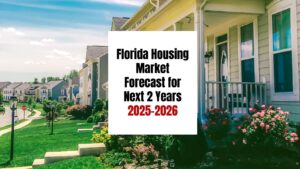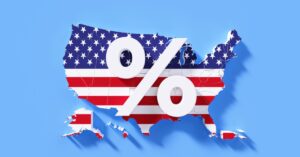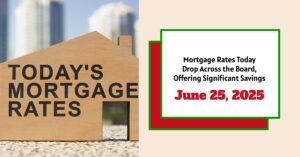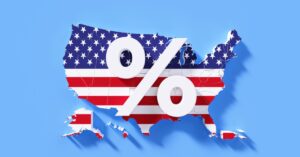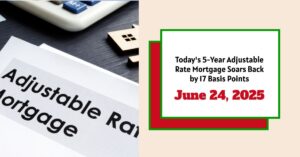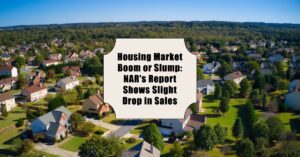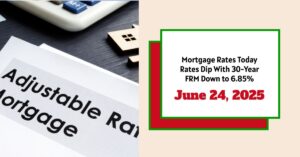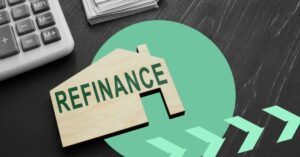The Florida housing market has always been a topic of interest for buyers, sellers, and investors alike. With its sunny beaches, vibrant cities, and booming tourism industry, the real estate market in the Sunshine State has seen significant growth over the years. However, with any market experiencing rapid growth, there comes the question of sustainability and the potential for a downturn.
Is Florida's housing market predicted to crash in the next two years? Experts say no. While growth may slow due to rising interest rates, Florida's demographics and rebound predictions suggest a market with staying power. Here are the latest trends in Florida's housing market.
Florida Housing Market Forecast for Next 2 Years: 2025-2026
Looking at the Florida Housing Market Forecast for Next 2 Years, I believe we're stepping into a period where the frantic energy cools down, inventory levels become much healthier, and while widespread massive price drops aren't necessarily on the horizon for the entire state, many areas will see prices stabilize or even dip slightly before finding a new equilibrium, heavily influenced by how interest rates behave.
Having watched the Florida market through multiple cycles – the booms, the corrections, and the quiet times – I've learned that few things are certain, but trends give us clues. And the trends I'm seeing right now point towards a market that's finally taking a breather after running a marathon at a sprinter's pace.
Feeling the Shift: What's Happening Right Now (Early-Mid 2025)
You don't need to be a real estate guru to sense that the market isn't quite as red-hot as it was a year or two ago. The official numbers back that up, painting a picture of a market that's definitely cooling its heels.
Based on the latest housing data released by the Florida Realtors®, Florida's housing market showed some clear signs of this slowdown:
- Inventory is Building: This is a big one! For what feels like ages, buyers were fighting over crumbs. Now, there are actually more homes to choose from. We saw active listings increasing. For single-family homes, supply reached about a 5.6-month level in April. This is a much healthier number than the super-low levels we saw during the peak frenzy. For condos and townhouses, the build-up is even more significant, hitting a 10.3-month supply. More choices mean buyers aren't under as much pressure to bid way over asking or waive inspections just to get a foot in the door.
- Prices are Easing (In Some Places): This is perhaps the most talked-about change. While prices are still way up from where they were before the pandemic hit, they aren't climbing like they used to. In fact, the statewide median sale price for single-family homes in April 2025 was $412,734, which was down 4% compared to April 2024. That 4% drop is actually the largest year-over-year decline we've seen since 2011! Condo and townhouse prices also saw a dip, with the median price at $315,000, down 6% year-over-year. This doesn't mean homes are suddenly “cheap,” but the relentless upward march has definitely paused, and in many areas, it's reversed slightly.
- Sales Volume is Slower: With higher prices (even if slightly easing) and, more importantly, higher mortgage rates, fewer people are able or willing to buy right now. Closed sales for single-family homes were down 4.5% in April 2025 compared to the year before. Condo and townhouse sales took an even bigger hit, down 14.8%. This tells us that while there might be more homes available, the pool of active buyers has shrunk.
Think about what happened over the last few years. Millions of people flocked to Florida, driving demand through the roof. Builders scrambled, but couldn't keep up initially. Then, ultra-low mortgage rates made homes seem more affordable on a monthly basis, even as prices soared. It was the perfect storm for a massive price surge. Now, those dynamics have changed. Migration might be slowing slightly, building has caught up in many areas, and mortgage rates? Well, they've been the biggest game-changer.
As Dr. Brad O'Connor, the Chief Economist for Florida Realtors, put it, affordability is the “No. 1 issue impeding sales growth.” And he's absolutely right. Even if prices dip a bit, the monthly payment on a loan at 7% or 8% is dramatically higher than one at 3% or 4%. That monthly cost is what most buyers care about most.
Why Florida Might Feel the Cool Down More Than Others
The national housing market picture looks a little different than Florida's specific situation right now. According to the latest insights from Cotality (Formerly CoreLogic), nationally, home price growth has slowed, but it was still positive overall – around 2.0% year-over-year in April 2025. So, why is Florida showing negative growth (-0.8% in April 2025) while the U.S. is still positive?
This is where my personal experience observing market extremes comes in. Florida wasn't just hot; it was exceptionally hot. Many areas saw prices double or more in just a couple of years. That kind of meteoric rise is often followed by a more pronounced correction or period of stagnation compared to areas that saw more modest growth. It's like a rubber band – the further you stretch it, the harder it snaps back.
Furthermore, Florida faces unique headwinds that some other states don't, or at least not to the same degree:
- Skyrocketing Insurance Costs: This is a major factor I hear about constantly. Homeowners insurance premiums in Florida have gone through the roof due to hurricane risks and issues within the insurance market. This adds hundreds, sometimes thousands, of dollars to the monthly cost of homeownership, making affordability even worse beyond just the mortgage payment. This burden disproportionately affects Florida homeowners compared to many other states.
- Property Taxes: As home values soared, so did property taxes (often with a delay due to caps like the Save Our Homes amendment, but they still rise significantly over time, especially on newly purchased properties). This is another significant ongoing cost.
- Investor Activity: Florida attracted a huge amount of investor money during the boom, both domestic and international. As the market cools and short-term rental income becomes less certain (due to increased competition and potential regulations), some investors might look to exit, adding more inventory to the market and putting downward pressure on prices, especially in popular investment areas.
Look at the list of the “coolest” markets in the U.S. right now, the places seeing the biggest price declines. According to Cotality, four out of the top five are in Florida: Cape Coral (-6.5%), Punta Gorda (-6.2%), North Port (-4.3%), and Naples (-3.7%). These are areas that experienced incredible growth, driven in part by migration and investor interest, and are now course-correcting sharply.
Even the list of the top 5 most at-risk markets in the entire U.S. are all in Florida: Cape Coral, Lakeland, North Port, St. Petersburg, and West Palm Beach. This isn't a coincidence; it reflects the severity of the preceding boom in these specific areas and the unique pressures Florida is facing.
Dr. Selma Hepp, Chief Economist at Cotality, noted that the majority of markets with annual price declines are concentrated in Florida and Texas, two states that saw massive inward migration and price run-ups. Florida's median price even dipped below the national median recently, falling out of the top 20 most expensive states – another sign of this course correction.
The Big Question: Florida Housing Market Forecast for Next 2 Years
Forecasting is always tricky, especially in a market with so many moving parts. However, based on the current data, expert opinions, and the underlying dynamics, here's how I see the Florida housing market potentially playing out over 2025 and into 2026:
Scenario 1: Mortgage Rates Stay “Higher for Longer” (Most Likely Path, at Least Initially)
If mortgage rates hover in the high 6% or 7%+ range, the trends we see now are likely to continue for the first part of this two-year window:
- Continued Inventory Growth: More homeowners who held off selling will eventually list their properties due to life changes. New construction, while perhaps slowing slightly from its peak pace, will continue to add supply. Buyers will remain cautious due to financing costs. This means inventory levels should continue to rise, putting buyers in a stronger negotiating position.
- Further Price Stabilization or Modest Declines: With more supply and limited demand (at current rates), competition among sellers will increase. This doesn't mean a crash, but it suggests prices will likely remain flat or see further small declines in many areas. The areas currently seeing the biggest drops (like Cape Coral, North Port, etc.) might continue to fall until they reach a level buyers find more palatable, especially considering insurance costs. Markets with less oversupply or stronger underlying local economies might fare better, seeing prices merely plateau.
- Slow Sales Volume: Transactions will likely remain subdued compared to the boom years. Buyers who do purchase will likely be those with urgent needs, those paying cash (Florida has a high percentage of cash buyers), or those accepting the current cost of borrowing.
- Condo Market Struggles Continue: The challenges facing the condo market – high insurance, rising association fees driven by new reserve requirements, and financing hurdles – are significant structural issues. I expect these will continue to weigh heavily on condo prices and sales volume throughout this period, potentially underperforming single-family homes statewide.
Scenario 2: Mortgage Rates Fall Towards 6% or Below (Potential for Mid- to Late-2026)
This is the wildcard, but one mentioned by both Dr. O'Connor and Dr. Hepp as a potential game-changer. If inflation comes under control and the Federal Reserve begins to cut rates, mortgage rates could drift lower. If they move towards the 6% mark or even slightly below:
- Latent Demand Awakens: There are many potential buyers sitting on the sidelines right now, either priced out by monthly payments or simply waiting for conditions to improve. A drop in rates would significantly lower the monthly cost of homeownership, suddenly making purchasing feasible for a larger group.
- Increased Buyer Competition: As demand picks up, the pressure on sellers would ease. While inventory might still be higher than the boom, a surge in buyer activity could start to absorb that supply.
- Price Stabilization and Potential Modest Growth: If demand increases significantly due to lower rates, the downward pressure on prices would likely reverse. Instead of declines, we could see prices stabilize and then begin to tick upwards again, though likely at a much more sustainable pace than the 2020-2022 period. The national forecast from Cotality suggested a 4.3% national price increase between April 2025 and April 2026. If Florida's unique headwinds (insurance, taxes) don't worsen dramatically, a drop in rates could potentially help Florida start to catch up to or participate in that national trend later in the forecast window.
- Increased Sales Volume: More buyers being able to afford homes means more transactions happening.
My Assessment for 2025-2026:
Based on the information and my own observations, my forecast leans towards a continuation of the current cooling trend through much of 2025, followed by a period of stabilization or very modest recovery in 2026, assuming interest rates either plateau or begin a gradual decline.
- 2025: Expect more of what we're seeing now. Inventory continues to build gradually. Prices statewide likely remain flat or experience small, single-digit percentage declines, especially in the most overheated markets. Sales volume stays muted. Affordability remains the primary challenge, heavily impacted by both mortgage rates and rising insurance costs.
- 2026: This year holds more potential variability depending on the interest rate environment.
- If rates stay high: Continuation of 2025 trends, perhaps with slower declines as the market finds a floor.
- If rates ease: We could see demand pick up, inventory growth slow, and prices begin to stabilize or show slight positive growth, maybe in the low single digits by the end of the year. Sales volume would increase.
I don't anticipate a market “crash” like 2008, primarily because lending standards have been much stricter this time around, and there isn't a massive overhang of distressed properties (at least not yet). This feels more like a necessary market correction and normalization after an unsustainable boom. The key difference from the national picture is that Florida's adjustment is starting from a much higher peak and is influenced by those unique Florida-specific costs like insurance.
What to Watch For
Keeping an eye on these key factors will be crucial in understanding how the forecast might shift:
- Interest Rates: This is the single biggest lever. Watch the Federal Reserve and economic data. Any significant move down will likely inject life back into the market.
- Inventory Levels: Is supply continuing to pile up, or are more buyers starting to absorb it? Different areas will show different trends.
- Insurance Market Stability: If insurance costs continue to rise unchecked, it will act as a major drag on affordability and demand, even if mortgage rates fall. Reforms or stabilization here could provide unexpected support.
- Migration Patterns: Is Florida still attracting lots of new residents, or is the pace slowing down, perhaps even seeing some outflow due to costs?
- Job Market: A strong economy and job market support housing demand. Any weakening here could negatively impact the forecast.
Takeaway: In my opinion, this cooling period is a healthy adjustment for the Florida market. It's creating a more balanced environment after years of extreme conditions. While it might feel less exciting than the boom, it's setting the stage for potentially more sustainable growth down the road, once affordability improves, whether through lower rates, higher wages, or some combination. The next two years will be fascinating to watch unfold.
Work with Norada in 2025, Your Trusted Source for
Real Estate Investing in “Florida”
Discover high-quality, ready-to-rent properties designed to deliver consistent returns.
Contact us today to expand your real estate portfolio with confidence.
Contact our investment counselors (No Obligation):
(800) 611-3060
Recommended Read:
- 3 Florida Housing Markets Are Again on the Brink of a Crash
- Florida Housing Market Predictions 2025: Insights Across All Cities
- Florida Housing Market 2024 & Predictions for Next 5 Years
- Florida Housing Market Trends: Rent Growth Falls Behind Nation
- When Will the Housing Market Crash in Florida?
- South Florida Housing Market: Will it Crash in 2024?
- South Florida Housing Market: A Crossroads for Homebuyers
